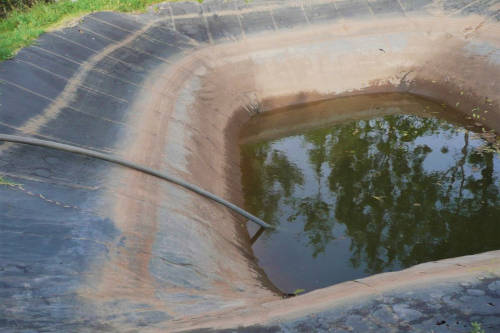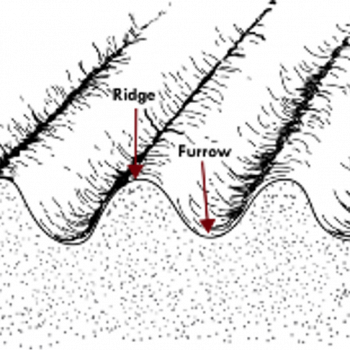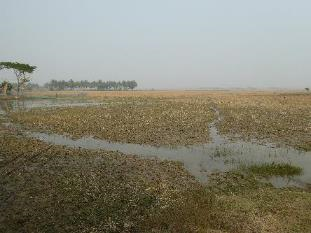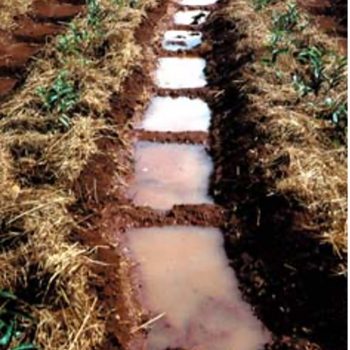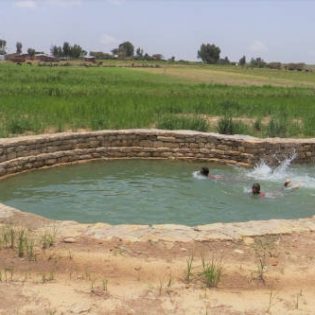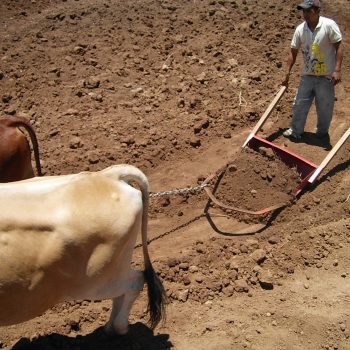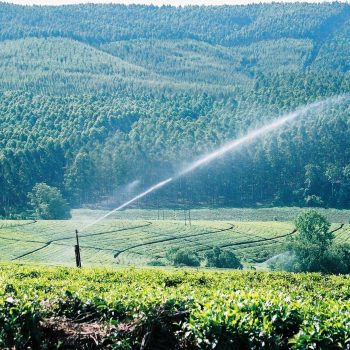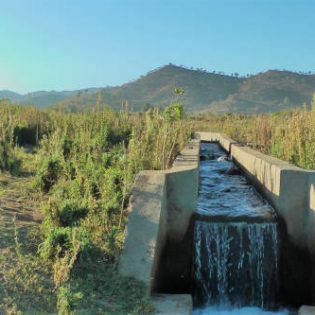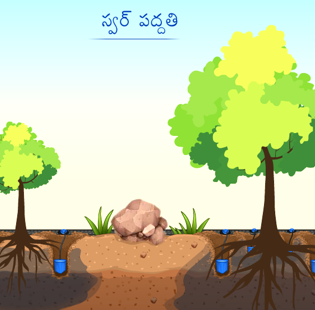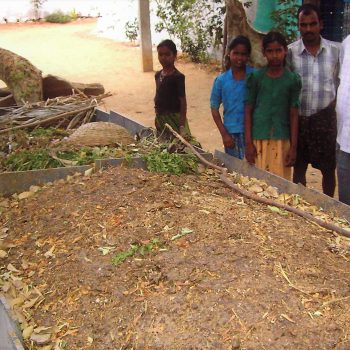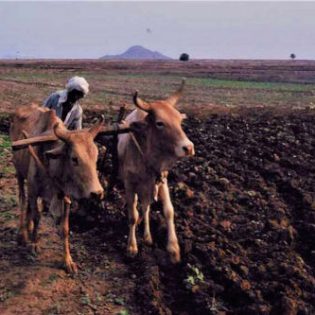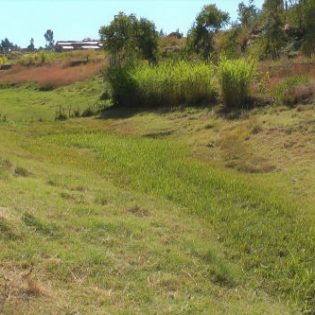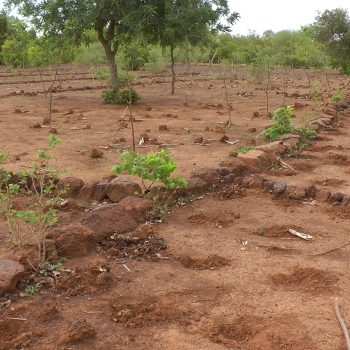Water harvesting is the collection of runoff for productive purposes. Instead of runoff being left to cause erosion, it is harvested and utilized. Water harvesting (WH) can be considered as a rudimentary low-cost alternative form of irrigation. The difference is that with WH the farmer has no control over timing. Runoff can only be harvested when it rains. In regions where crops are entirely rainfed, a reduction of 50% in the seasonal rainfall, for example, may result in a total crop failure. If, however, the available rain can be concentrated on a smaller area, reasonable yields will still be received. Of course in a year of severe drought there may be no runoff to collect, but an efficient water harvesting system will improve plant growth in the majority of years (Critchley et al., 1991). In arid environments, where 90% of rainfall evaporates back into the atmosphere, water harvesting can increase the beneficial rainwater available for transpiration from 20% to 50% (Oweis et al., 1999). Water harvesting as such increases the soil moisture available for the plants to grow, and hence contributes to water productivity improvement reducing E, raising T hence increasing biomass (or yields).
Water harvesting can take place in almost any given part of the world, from arid regions receiving less than 250 millimetres rainfall per year to harvesting water in the tropics. Techniques can be categorised into three basic categories: Microcatchments (sometimes referred to as “Within-Field Catchment System”); External catchment systems (Long Slope Catchment Technique); and Floodwater farming (floodwater harvesting, often referred to as “Water Spreading” and sometimes “Spate Irrigation”) (Critchley et al., 1991).
An example of an ‘external catchment system’ would be the Jessour in the arid environment (<200mm rainfall) of Tunisia in which catchments are combined with the construction of terraces and dykes to capture and direct water for the production of fruit trees (e.g. olive, fig, almond, and date palm), legumes (e.g. pea, chickpeas, lentil, and faba bean), barley and wheat.
An example of micro-catchments is the semi-circular bunds which are typically used for rangeland rehabilitation or fodder production. In Kenya (Amboseli) semi-circular bunds were dug at scale (JustDiggit) to restore rangelands for pastoralist. By means of using WaPOR data and google earth engine (GEE) an assessment could be made to ascertain whether or not the intervention area is actually regreening. To assure observations in change are not due to climatic changes, the intervention site was compared to a buffer area around it (the reference site). As the graph shows the NPP (or net primary production, an indication of biomass) in the intervention area increased as compared to the reference are starting from 2016 when the semi-circular bunds were developed. The percentage difference (in NPP) in 2019 already amounted to more than 20%. To verify whether the regreened area is indeed pasture restoration and no other unpalatable vegetation, this WaPOR assessment can be combined with ground observations. (Insert here picture a and b)
A comparison of the Net Primary Production (NPP) between the Kuku Intervention site (Kenya) where semi-circular bunds where constructed, and the reference site. Figure (a) shows the timeseries of the NPP in which a positive difference between the intervention and reference site are visible from 2016 onward (when the bunds where constructed). The intervention site (green) and the reference site (red) are shown in figure (b).
Water harvesting can take place in almost any given part of the world, from arid regions receiving less than 250 millimetres rainfall per year to harvesting water in the tropics. Techniques can be categorised into three basic categories: Microcatchments (sometimes referred to as “Within-Field Catchment System”); External catchment systems (Long Slope Catchment Technique); and Floodwater farming (floodwater harvesting, often referred to as “Water Spreading” and sometimes “Spate Irrigation”) (Critchley et al., 1991).
An example of an ‘external catchment system’ would be the Jessour in the arid environment (<200mm rainfall) of Tunisia in which catchments are combined with the construction of terraces and dykes to capture and direct water for the production of fruit trees (e.g. olive, fig, almond, and date palm), legumes (e.g. pea, chickpeas, lentil, and faba bean), barley and wheat.
An example of micro-catchments is the semi-circular bunds which are typically used for rangeland rehabilitation or fodder production. In Kenya (Amboseli) semi-circular bunds were dug at scale (JustDiggit) to restore rangelands for pastoralist. By means of using WaPOR data and google earth engine (GEE) an assessment could be made to ascertain whether or not the intervention area is actually regreening. To assure observations in change are not due to climatic changes, the intervention site was compared to a buffer area around it (the reference site). As the graph shows the NPP (or net primary production, an indication of biomass) in the intervention area increased as compared to the reference are starting from 2016 when the semi-circular bunds were developed. The percentage difference (in NPP) in 2019 already amounted to more than 20%. To verify whether the regreened area is indeed pasture restoration and no other unpalatable vegetation, this WaPOR assessment can be combined with ground observations. (Insert here picture a and b)
A comparison of the Net Primary Production (NPP) between the Kuku Intervention site (Kenya) where semi-circular bunds where constructed, and the reference site. Figure (a) shows the timeseries of the NPP in which a positive difference between the intervention and reference site are visible from 2016 onward (when the bunds where constructed). The intervention site (green) and the reference site (red) are shown in figure (b).
References
Critchley, W., Siegert, K. and Chapman, C. (1991). Water Harvesting. A Manual for the Design and Construction of Water Harvesting Schemes for Plant Production. Food and Agricultural Organisation of the UN – Rome, 1991.
Oweis, T., Hachum, A., & Kijne, J. (1999). Water harvesting and supplemental irrigation for improved water use efficiency in dry areas. In Rainfed Agriculture: Unlocking the Potential.
Additional information
| Agriculture | Rainfed (Crop) |
|---|
